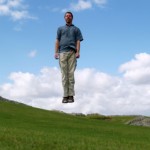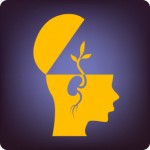Move to Think
By Asher Crispe: January 20, 2011: Category Intellivisions, TED talks
 One phenomenal voice calling for an educational revolution is that of Ken Robinson. Check out his first video from TED.com embedded below. If you have not already seen this one, we think you will find it extremely inspiring and entertaining. His insistence on breaking with the bad traditions of the industrial educational complex are at some level a kind of reflection of the Abrahamic rejection of the misguided values of his own time.
One phenomenal voice calling for an educational revolution is that of Ken Robinson. Check out his first video from TED.com embedded below. If you have not already seen this one, we think you will find it extremely inspiring and entertaining. His insistence on breaking with the bad traditions of the industrial educational complex are at some level a kind of reflection of the Abrahamic rejection of the misguided values of his own time.
The article following the video below is meant to provide some Jewish-inspired commentary on points that Robinson addresses. We have also included an Interinclusion original short video that takes off on the limits of the traditional classroom and the need for a more innovative approach to learning.

In a certain way the whole Jewish tradition began with a man who decided that he needed to ‘move to think’. Tracing back to the roots of Jewish education, we have to pay homage to the figure of Abraham (Avraham). Unlike James Dean, Avraham was a rebel with a cause. Discontent with the status quo and the graven images of his ancestors, he manifested his unique ability for divergent thinking. Instead of smashing guitars on stage, he smashed idols. He did not accept the dogma of, nor conform to, the debased society that he grew up in. He was not afraid to be the black sheep, to be out of step with the world.
In Genesis 12:1 we find God telling Avraham: “Go to yourself from your land, from your relatives, and out of your father’s house, to the land that I will show you.” Sometimes, the only way for a person to find themselves is to travel beyond the false framework of the society that they are born into. One is never stuck being determined by initial conditions. We are not mere products of our environment. Many, in fact, have been inspired by an inner command or conviction which impels a person beyond the self-assumed comforts of familiar surroundings to seek the fullness of existence elsewhere. Rejection of the half-truths and impoverished representations of reality which others historically held up and idolized, proves to be a launch point to creativity.
The ‘Ultimate Reality’ that spoke to Avraham, in the form of a mandate to find himself in a dynamic process, would eventually lead him to reveal his creative potential. “In the land in which I will show you” may be read in the sense of: ‘the context in which I will showcase you,’ where your exceptional talents and abilities may find expression and be displayed. In short, the universal promise embedded in this verse revolves around the guidance to a place or  ‘land‘ where ‘you can show us what you got’. Some environments leave us sterile. Change all that and suddenly the flowering begins.
‘land‘ where ‘you can show us what you got’. Some environments leave us sterile. Change all that and suddenly the flowering begins.
For Avraham, his creative actualization that stemmed from a break with his limited past, reaches its pinnacle manifestation with the birth of his son Isaac (Yitzchak) whose name comes from the word tzechok meaning “to play”, “game” or “laugh”. ‘Rebellious’ creativity sometimes proves to be more than subversion. In this case, Yitzchak, the offspring of Avraham, personifies a sequence of events whereby ‘moving to think’ leads to the emergence of gaming!
The interplay of Avraham and Yitzchak may be likened to creative vitality and game play in an educational context. All of the tests of Avraham may be reconfigured as part of the gamification of life where he learns from successively more difficult changes. (Note: in a future investigation we might even present the famous Akedah or binding of Yitzchak as an example of testing the limits of the game.)
Circling back to the beginning of the verse, we find that the first words are lech lecha (לך לך) which, when written in a Torah scroll look indistinguishable as written characters without vocalization (this is on account of a Torah scroll being written without vowels). These two words are normally translated as “go to yourself” but reality it is like seeing “Go/move” and “ to yourself” as the same thing. In other words, your (sense) of self is in the going or moving.
We might even imagine the superposition or the folding over of these two words, one on top of the other, such that we would not read the movement as to yourself as if there was a fixed object called “a self” that one was approaching or targeting, but rather that selfhood is a fluid ‘movement’ or process. We truly are dynamic creatures and not static beings. Self discovery turns into an endless approach rising asymptotically. ‘Self-as-a-process’ thinking regards standing still as arrested development. Freeing the mind is allowing the mind to move.
One particularly delicious allusion found in Kabbalah pops out of the Hebrew letters in the expression ‘go to yourself’ or lech lecha (לך לך) and involves a process of filling out each Hebrew letter according to the spelling of the name of that letter. For example, the first letter in this expression is lamed which, represented as a single written character ל (makes an “l” sound) but when pronounced according to its name has to be said as though it were all three letters of its name spelled out: למד (lamed). This would be the equivalent to the difference between the written letters B or C verses the names Bee and Cee. Think of it as a way of compressing and encoding information in Hebrew.
So the letter lamed (ל) kaf (כ) lamed (ל) kaf (כ) (for lech lecha לך לך) equal 30+20+30+20 respectively. Their filling out looks like this:
למד כף למד כף
The extra added letters and their mathematical equivalent are:
מ (40) ד (4) ף (80) מ (40) ד (4) ף (80)
Add these filling letters add up to equal 248 or Avraham (א 1 ב 2 ר 200 ה 5 ם 40) . This equation suggests that the expansion of internal dynamics or the ‘self-as-a-process’ is embodied in the figure of Avraham.
Avraham was a trail blazer. His education was highly personalized. No one else could walk in his exact path. His story illustrates something fundamental to all education which we find recorded in Proverbs 22:6 “Educate the youth in accordance to his way….” These worlds of King Solomon (Shlomo) underscore the need to focus on personalized education that admits to the diversity of intelligence. The verse does not suggest that education be in accordance with the way, as if there were some all inclusive universal system of education that works for everyone. Rather, we educate each person according to that individual’s particular way. The job of the teacher is to uncover the way in which each student learns best.
Furthermore, all students must be youths. Even an adult has to become ‘youthful’ in order to learn. Life long learning is also one of the primary ways of retaining one’s youthfulness. In Hebrew, the word in the verse for youth is na’ar (נער) which has an affinity with the word ai’r (ער) meaning “awake” as well as the word hit’or’rarut (התעוררות) meaning “awakening” or “enlivening”. Thus, the task of the educator is to provide stimulating learning conditions wherein the student’s own talents and ability can be awoken. We must demand learning that restores our youthfulness and stimulates us.
(נער) which has an affinity with the word ai’r (ער) meaning “awake” as well as the word hit’or’rarut (התעוררות) meaning “awakening” or “enlivening”. Thus, the task of the educator is to provide stimulating learning conditions wherein the student’s own talents and ability can be awoken. We must demand learning that restores our youthfulness and stimulates us.
In a nutshell, we need to learn to move so that we can move to learn. Keeping it real, fresh and exciting, fuels the fire and lets our creativity shine forth.
Riffing on a story in Robinson’s talk about a student that needs to move to think, we produced a short interinclusion video illustrating the idea to leave you with:
Move to Think,























;)
;)
;)
;)
;)
;)
;)
;)
;)
;)

What are the schools / learning institutions doing to have that applied?
What´s the way to have many “Avraham´s” in our world?